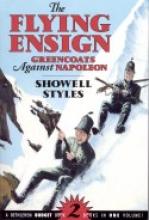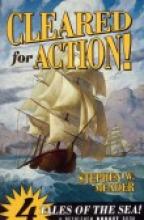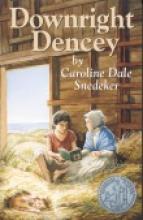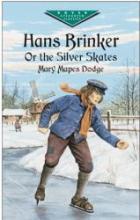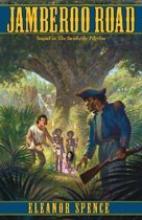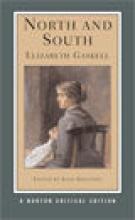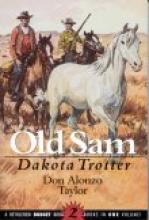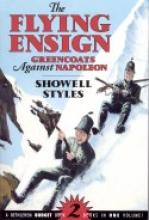19th century Historical Fiction
Byrd of the 95th
Subject(s):
Setting:
Grade / Age level:
Review:
This book is now included in the Bethlehem Budget Book The Flying Ensign, also reviewed on this site.
I really liked this book. I can vouch for my wife's statement that this is a great read aloud. I read it to my children at bedtime (ages 3 through 9) - they were engaged... though the younger ones usually fell asleep. The older two LOVED it.
Like the first book, there are plentiful descriptions of landscape, escapes, rescues, heroes, villians and architecture. The latter two are grouped for a reason. This book finds the ensign and all the principle characters of the last book together again. This time however, the story centers around a diversion to rescue the beautiful Anita and her noble father Don Claudio del Riego (one of the wealthiest noblemen in French-occupied Spain). They have been kidnapped, along with their hidden cache of jewels, by the traitorous El Cuchillo - a brigand from an ancient and once respected family - who makes his home in the family castle in the mountains. The castle features a knife-like spike of rock projecting up from within the fortress.
That the Spanish nobleman is now allied with the occupying French force, or that he chose to be a brigand rather than a noble may each be subjects for discussion of how the author gave him his nickname and abode - El Cuchillo - The Knife.
I had a hard time unraveling some of the battle scenes the author describes in the story until I got to the very helpful map on pg. 277. There's a lot of interesting military history, but I would have appreciated a few more maps.
It should also be noted that the author, while painting the valor and honor which the young ensign felt and aspired to, does not refrain from describing some of the gruesome aspects of battle. Unlike so many Disney stories (thank goodness) men actually die in this book. Children are neither idiots nor prudes in realizing the effect of violence can be death! You may want to read it to your kids - you can. But, for younger listeners, you may wish to keep an eye out for the few graphic descriptions. For instance: "In the ranks a few yards away gaps appeard - men flung into fragments by the flying [cannon] balls, men struck down and screaming in agony." Or in the story above: "... saw one twelve-pounder ball hurtle through the ranks a few paces from him, tearing two green-coated men into red fragments and ripping an arm from a third."
This is an enjoyable, readable story about a heroic young man who braves dangers and wins. In other words, a good hero story for kids. And the pretty young sable-haired Anita should be appealing to both boys and girls as a person who knows courage as well as courtliness.
I really liked this book. I can vouch for my wife's statement that this is a great read aloud. I read it to my children at bedtime (ages 3 through 9) - they were engaged... though the younger ones usually fell asleep. The older two LOVED it.
Like the first book, there are plentiful descriptions of landscape, escapes, rescues, heroes, villians and architecture. The latter two are grouped for a reason. This book finds the ensign and all the principle characters of the last book together again. This time however, the story centers around a diversion to rescue the beautiful Anita and her noble father Don Claudio del Riego (one of the wealthiest noblemen in French-occupied Spain). They have been kidnapped, along with their hidden cache of jewels, by the traitorous El Cuchillo - a brigand from an ancient and once respected family - who makes his home in the family castle in the mountains. The castle features a knife-like spike of rock projecting up from within the fortress.
That the Spanish nobleman is now allied with the occupying French force, or that he chose to be a brigand rather than a noble may each be subjects for discussion of how the author gave him his nickname and abode - El Cuchillo - The Knife.
I had a hard time unraveling some of the battle scenes the author describes in the story until I got to the very helpful map on pg. 277. There's a lot of interesting military history, but I would have appreciated a few more maps.
It should also be noted that the author, while painting the valor and honor which the young ensign felt and aspired to, does not refrain from describing some of the gruesome aspects of battle. Unlike so many Disney stories (thank goodness) men actually die in this book. Children are neither idiots nor prudes in realizing the effect of violence can be death! You may want to read it to your kids - you can. But, for younger listeners, you may wish to keep an eye out for the few graphic descriptions. For instance: "In the ranks a few yards away gaps appeard - men flung into fragments by the flying [cannon] balls, men struck down and screaming in agony." Or in the story above: "... saw one twelve-pounder ball hurtle through the ranks a few paces from him, tearing two green-coated men into red fragments and ripping an arm from a third."
This is an enjoyable, readable story about a heroic young man who braves dangers and wins. In other words, a good hero story for kids. And the pretty young sable-haired Anita should be appealing to both boys and girls as a person who knows courage as well as courtliness.
Additional notes:
This book was donated for review by Bethlehem Books.
Reviewed by:
First reviewed:
3-19-03
Cleared for Action
Subject(s):
Setting:
Grade / Age level:
Review:
This "Budget Book" offers four full-length stories in one volume...
Clear for Action by Stephen Meader (copyright 1940)
Clear for Action tells of American sailing at the beginning of the War of 1812. Jeff Robbins is a young sailor from Maine, taking his first voyage aboard a cargo schooner bound for the Carribean. All aboard are nervous about being overtaken by British vessels who have been intercepting ships, blocking harbors and making trouble all along the Atlantic Coast. Jeff's world is turned upside down when their schooner is apprehended and he and several of his shipmates are forced into service on a British frigate. Clear for Action is an interesting and worthwhile adventure story that provides all kinds of insightful angles on the War of 1812 and offers a unique contrast to very-British Midshipman Quinn collection. The story wraps up amidst interesting plot-twists - a deserted island, buried treasure and big plans.
Reviewed 4-29-02
Whaler Round the Horn by Stephen Meader (copyright 1950)
Stephen Meader's "whaling yarn" brings to life the exciting and dangerous adventures of a New England whaleboat sailing all the way around Cape Horn (at the tip of South America) to the Pacific Ocean. Young Rodney Glenn, an orphan from New Hampshire, has always wanted to be a whaler, and we follow him aboard his first time at sea. Everything is new and exciting to his young eyes and young people of today will readily relate to his adventures.
Historically speaking, it's nice to find a story that gives an honest look at the interesting but sometimes ugly world of whaling without the politically correct shock and contempt with which whalers of the past are generally treated today. This was uniquely important to me in that one of my great-great-great grandfathers was a Portuguese whaler from the Azores. The first time I told my daughter about this ancestor (who was also a third order Carmelite) she reacted with disgust, given her great interest in whales and the number of books and shows on whales she had eagerly digested.
In addition to the whale theme which contains undercurrents of Moby Dick, 19th Century Hawaii provides a unique contrast with the home port in New England and the main character's adventures through massive storms (the Perfect Storm has little on this), harrowing escapes from the "jaws of death" and adventures on a deserted stretch of one of the Hawaiian Islands make for a memorable and engaging story.
Reviews of the other two stories in the Budget Book Cleared for Action by Stephen Meader will be forthcoming.
Clear for Action by Stephen Meader (copyright 1940)
Clear for Action tells of American sailing at the beginning of the War of 1812. Jeff Robbins is a young sailor from Maine, taking his first voyage aboard a cargo schooner bound for the Carribean. All aboard are nervous about being overtaken by British vessels who have been intercepting ships, blocking harbors and making trouble all along the Atlantic Coast. Jeff's world is turned upside down when their schooner is apprehended and he and several of his shipmates are forced into service on a British frigate. Clear for Action is an interesting and worthwhile adventure story that provides all kinds of insightful angles on the War of 1812 and offers a unique contrast to very-British Midshipman Quinn collection. The story wraps up amidst interesting plot-twists - a deserted island, buried treasure and big plans.
Reviewed 4-29-02
Whaler Round the Horn by Stephen Meader (copyright 1950)
Stephen Meader's "whaling yarn" brings to life the exciting and dangerous adventures of a New England whaleboat sailing all the way around Cape Horn (at the tip of South America) to the Pacific Ocean. Young Rodney Glenn, an orphan from New Hampshire, has always wanted to be a whaler, and we follow him aboard his first time at sea. Everything is new and exciting to his young eyes and young people of today will readily relate to his adventures.
Historically speaking, it's nice to find a story that gives an honest look at the interesting but sometimes ugly world of whaling without the politically correct shock and contempt with which whalers of the past are generally treated today. This was uniquely important to me in that one of my great-great-great grandfathers was a Portuguese whaler from the Azores. The first time I told my daughter about this ancestor (who was also a third order Carmelite) she reacted with disgust, given her great interest in whales and the number of books and shows on whales she had eagerly digested.
In addition to the whale theme which contains undercurrents of Moby Dick, 19th Century Hawaii provides a unique contrast with the home port in New England and the main character's adventures through massive storms (the Perfect Storm has little on this), harrowing escapes from the "jaws of death" and adventures on a deserted stretch of one of the Hawaiian Islands make for a memorable and engaging story.
Reviews of the other two stories in the Budget Book Cleared for Action by Stephen Meader will be forthcoming.
Additional notes:
Copyrights 1940-1950
This book was donated for review by Bethlehem Books
Reviewed by:
First reviewed:
2-22-03
Downright Dencey
Subject(s):
Setting:
Grade / Age level:
Review:
This charming story, a Newbery Honor Book for 1928, has just been reprinted by Bethlehem Books. Set on the Island of Nantucket, off of Cape Cod in Massachusetts in the 1810s and 1820s, the story follows the Coffyn family in the largely Quaker community of Nantucket, and especially their daughter Dionis "Dencey". Dencey is a young girl from a proper Quaker family with a temper and a heart of gold. She befriends an outcast boy and teaches him to read in order to make up for hurting him in a fit of temper. Their friendship baffles Dencey's parents and the community but bears fruit in unexpected ways. It is a lovely story, filled with truths about faith, family and friendship. It is a little complex, though, and (as recommended by the publisher) is probably best for ages 12 and up.
Additional notes:
This book was donated for review by Bethlehem Books.
Reviewed by:
First reviewed:
7-31-03
Hans Brinker Or the Silver Skates
Subject(s):
Setting:
Grade / Age level:
Review:
Hans Brinker is a story designed to bring children of the 19th century (from around the world) an understanding and appreciation of the culture, traditions and history of Holland. The story focuses on the Brinker family. Ten years before the story begins, the father was seriously injured working on the dikes (which keep the water out of the reclaimed land of Holland), leaving him with the intelligence of a small child. Mrs. Brinker struggles to meet ends while remaining faithful to her husband's wish to never sell a watch he had given her. The two children, Hans and Gretel, are shunned by many at school for their shabby clothing. Meanwhile the story develops with a number of Hans' schoolmates who take a skating trip along the frozen canals through several important Dutch cities. The boys visit various churches and museums, allowing the reader to be impressed by many interesting tidbits from Holland's history. In the end, Mrs. Brinker and her family's perserverance faithfulness is greatly rewarded. A heartwarming classic tale and a great read-aloud for the family.
Reviewed by:
First reviewed:
4-27-02
Initiation
Publisher:
Lepanto Press
Binding:
Sewn Hardcover
Subject(s):
Setting:
Grade / Age level:
Review:
Set in aristocratic England of the late 19th century, this novel by a convert to Catholicism explores the concept of our participation in the Atonement. Young Sir Nevill Fanning is thoughtlessly and unconsciously pagan (though outwardly Catholic) and heir to his dear Aunt Ann's estate. Early on, he falls in love with a Protestant, and this raises various issues both within his aunt and within himself. A Mr. Morpeth represents the holiness and wisdom of the Church as Nevill and Ann work out their salvation.
The novel is at once a profound explanation and touching portrayal of intercessory prayer and atoning suffering, using the unique idiom of the novel, in which the author can create and then unfold an entire cast of characters. Psychological insights and matters of spiritual growth are magnified and clarified in the lens of story. For various reasons, I have recently read a lot of Jane Austen and Charlotte Bronte, and it is all the more interesting to enter into an English countryside world not too far removed from theirs in place or time, but very much removed in theological reach.
It would have been helpful if the publishers had included a table of contents. Several striking passages proved very hard to relocate. There is an extraordinarily sweet and insightful passage about people who see little "signs" in various things. (See Book 2, chapter V, section IV, or, page 261) Even the first passage about initiation, a thoughtful reflection on the difference between those who have come to accept what happens and those who have not, is very hard to find. It's on page 71, and it is clearly the prologue to the interior substance of the story.
The novel is at once a profound explanation and touching portrayal of intercessory prayer and atoning suffering, using the unique idiom of the novel, in which the author can create and then unfold an entire cast of characters. Psychological insights and matters of spiritual growth are magnified and clarified in the lens of story. For various reasons, I have recently read a lot of Jane Austen and Charlotte Bronte, and it is all the more interesting to enter into an English countryside world not too far removed from theirs in place or time, but very much removed in theological reach.
It would have been helpful if the publishers had included a table of contents. Several striking passages proved very hard to relocate. There is an extraordinarily sweet and insightful passage about people who see little "signs" in various things. (See Book 2, chapter V, section IV, or, page 261) Even the first passage about initiation, a thoughtful reflection on the difference between those who have come to accept what happens and those who have not, is very hard to find. It's on page 71, and it is clearly the prologue to the interior substance of the story.
Perspective:
Catholic
Additional notes:
This book was donated for review by Lepanto Press
Reviewed by:
First reviewed:
3-26-01
Jamberoo Road
Subject(s):
Setting:
Grade / Age level:
Review:
Reviewed by:
First reviewed:
7-3-2007
North and South
Subject(s):
Setting:
Grade / Age level:
Review:
Additional notes:
A Norton Critical Edition edited by Alan Shelston.
Reviewed by:
First reviewed:
6-11-2007
Old Sam, Dakota Trotter
Subject(s):
Setting:
Grade / Age level:
Review:
This Bethlehem Budget Book contains two books in one softcover volume: Old Sam, Thoroughbred Trotter (copyright 1955) and Old Sam and the Horse Thieves (copyright 1967).
Old Sam is the story of two young boys (ages 10 and 12) living in the wild Dakota Territory of the 1880s and their crippled - but extremely capable - horse named Old Sam. They are based on the author's own homesteading experiences as a young boy. Although there are similarities in time and location, unlike the Little House books which focus so much on family life, the Old Sam books are more like adventure stories about the two boys and their horse exploring the strange untamed land around them, "hunting" for wild animals and "bad guys" and proving to others how great Old Sam really is. A delightful story even on a very simple level, with many funny and interesting plot twists (I had to re-read favorite chapters aloud to Daddy at dinner time under persistent urging from my children), the book also portrays an important historical look at pioneer life and the author shares wisdom in experiences relating to using one's head, dealing with neighbors and the importance of courage, fortitude and basic competence. Naturally, the book makes especially great reading for boys and horse-lovers. Our family enjoyed this book so much as a read aloud that my husband and I ordered a number of copies for Christmas presents for our godchildren.
The second story focuses on Johnny and Old Sam's role in unraveling the problem of a band of horse-thieves plaguing the neighborhood. Although still quite young, Johnny's competence and fairness earn him the respect of the Sheriff and other important men of the town. A really great story, this is bound to be a family favorite. It is the sort of story that will likely help reluctant readers (especially boys in mid-grade school) learn to appreciate a really good book. It also touches upon some tough questions about fairness and justice that young readers can grapple with alongside the hero of the book.
Old Sam is the story of two young boys (ages 10 and 12) living in the wild Dakota Territory of the 1880s and their crippled - but extremely capable - horse named Old Sam. They are based on the author's own homesteading experiences as a young boy. Although there are similarities in time and location, unlike the Little House books which focus so much on family life, the Old Sam books are more like adventure stories about the two boys and their horse exploring the strange untamed land around them, "hunting" for wild animals and "bad guys" and proving to others how great Old Sam really is. A delightful story even on a very simple level, with many funny and interesting plot twists (I had to re-read favorite chapters aloud to Daddy at dinner time under persistent urging from my children), the book also portrays an important historical look at pioneer life and the author shares wisdom in experiences relating to using one's head, dealing with neighbors and the importance of courage, fortitude and basic competence. Naturally, the book makes especially great reading for boys and horse-lovers. Our family enjoyed this book so much as a read aloud that my husband and I ordered a number of copies for Christmas presents for our godchildren.
The second story focuses on Johnny and Old Sam's role in unraveling the problem of a band of horse-thieves plaguing the neighborhood. Although still quite young, Johnny's competence and fairness earn him the respect of the Sheriff and other important men of the town. A really great story, this is bound to be a family favorite. It is the sort of story that will likely help reluctant readers (especially boys in mid-grade school) learn to appreciate a really good book. It also touches upon some tough questions about fairness and justice that young readers can grapple with alongside the hero of the book.
Reviewed by:
First reviewed:
12-18-01
The Flying Ensign: Greencoats against Napoleon
Subject(s):
Setting:
Grade / Age level:
Review:
In their latest "Budget Book", Bethlehem Books gives us a double dose of adventure featuring Ensign Peter Byrd of the "Fighting 95th" Riflemen of the British army.... The Flying Ensign (copyright 1960)
In the first story, the treacherous mountains of Northern Spain in winter provide a unique backdrop for the harrowing and courageous endeavours of "the Flying Ensign" and his comrades in rescuing their friend from certain death behind enemy lines and subsequently attempting to rejoin the ranks of the British army as they retreat from a desperate and lop-sided challenge to Napoleon's forces.
Fans of Showell Styles' Midshipman Quinn stories will recognize the similar attention to detail and themes of courage and ingenuity tied up with actual historic events in the Flying Ensign but with fresh characters, settings, and adventures. The landscape, architecture and culture of Spain are a fascinating place to experience mountain climbing adventures, hair-raising rescues and escapes and a wide variety of heroes and villains on both sides of the battle lines.
A quick and engaging read for ages 10 and up or a great read aloud for the whole family.
Also see our review of the second book in this volume - Byrd of the 95th.
In the first story, the treacherous mountains of Northern Spain in winter provide a unique backdrop for the harrowing and courageous endeavours of "the Flying Ensign" and his comrades in rescuing their friend from certain death behind enemy lines and subsequently attempting to rejoin the ranks of the British army as they retreat from a desperate and lop-sided challenge to Napoleon's forces.
Fans of Showell Styles' Midshipman Quinn stories will recognize the similar attention to detail and themes of courage and ingenuity tied up with actual historic events in the Flying Ensign but with fresh characters, settings, and adventures. The landscape, architecture and culture of Spain are a fascinating place to experience mountain climbing adventures, hair-raising rescues and escapes and a wide variety of heroes and villains on both sides of the battle lines.
A quick and engaging read for ages 10 and up or a great read aloud for the whole family.
Also see our review of the second book in this volume - Byrd of the 95th.
Additional notes:
Copyrights 1960/1962
Reviewed by:
First reviewed:
2-21-03

